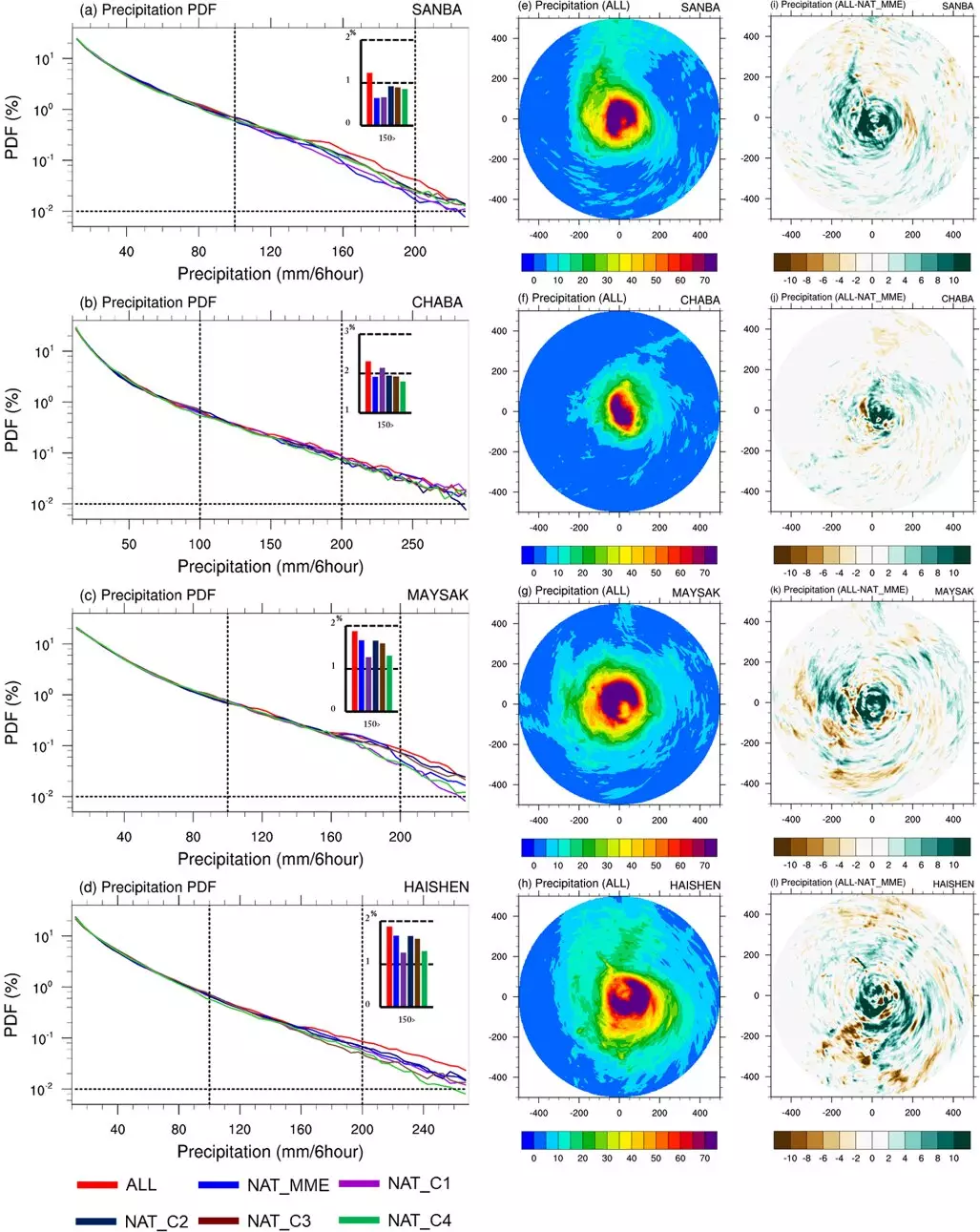Last year, Typhoon Hinnamnor made headlines as the first super typhoon to develop at a high latitude since records began. This, coupled with an unanticipated intense downpour in Osong, Chungcheongbuk-do, resulting in numerous casualties, highlights the increasing impact of extreme weather events caused by Earth’s rising temperatures. Professor Seung-Ki Min and Dr. Minkyu Lee from Pohang University of Science and Technology (POSTECH) recently conducted a quantitative analysis of the influence of global warming on typhoons making landfall on the Korean Peninsula. In this article, we critically examine their research and its implications.
Accurate prediction and effective mitigation of typhoon damages necessitate a better understanding of the influence of global warming. To address this, the researchers utilized a high-resolution climate model to simulate the impact of global warming on typhoon intensity and extreme precipitation. Four strong typhoons that made landfall on the Korean Peninsula between 2011 and 2020 were chosen for simulation under both current climate conditions and counterfactual conditions without human-induced warming.
The researchers found that global warming from human activities has amplified overall typhoon intensity and precipitation. This amplification was particularly pronounced at maximum typhoon intensity, indicating a potential increase in the frequency of powerful super typhoons over East Asia in the future. Additionally, the area exposed to extreme rainfall generated by typhoons expanded due to warmer climate conditions. This expansion is attributed to the strengthening of upward motion near the typhoon center and the increase in atmospheric water vapor resulting from ocean surface warming.
One notable aspect of Professor Min and Dr. Lee’s research is their use of a 3-km, high-resolution regional climate model simulation. While previous studies on the anthropogenic warming contribution to typhoons affecting Korea have been limited, this research fills the gap by providing a more detailed analysis. The high-resolution model allows for a more accurate representation of the complex interactions between climate variables, which enhances the reliability of the findings.
The research conducted by Professor Min and Dr. Lee serves as conclusive evidence that global warming has a significant impact on typhoons making landfall on the Korean Peninsula. These findings have important implications for policymakers and disaster management authorities. As the intensity and extent of typhoons continue to increase, it is crucial to implement effective adaptation and mitigation strategies. This includes investing in early warning systems, improving infrastructure resilience, and fostering international collaboration to address the global nature of climate change.
While Professor Min and Dr. Lee have made significant strides in understanding the impact of global warming on typhoons, there are still areas that warrant further exploration. For instance, the specific factors contributing to the expansion of extreme precipitation areas during typhoons require more in-depth analysis. Additionally, the long-term consequences of these climate changes, such as their effect on coastal ecosystems and human livelihoods, should be investigated.
The research conducted by Professor Seung-Ki Min and Dr. Minkyu Lee sheds new light on the impact of global warming on typhoons making landfall on the Korean Peninsula. Their use of high-resolution climate models provides valuable insights into the amplification of typhoon intensity and extreme precipitation due to human-induced warming. As we navigate the challenges posed by climate change, it is imperative to continue conducting research, fostering collaboration, and taking proactive measures to mitigate the increasingly severe impacts of typhoons and other extreme weather events.


Leave a Reply